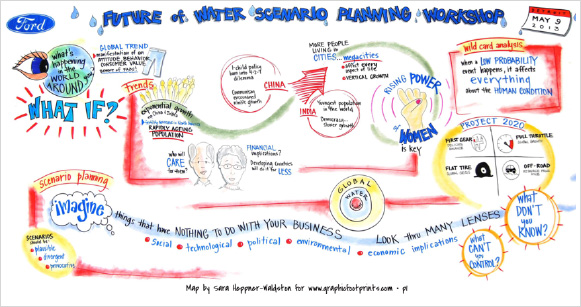Sustainability Report 2013/14
Water
Water Impacts, Risks and Opportunities
Historically, water has been a relatively inexpensive resource. But that’s changing, and the cost of using water is expected to continue increasing in the coming decades. For a manufacturing company like ours, that could mean higher operating costs.
From a business perspective, it is important to strategically reduce water consumption now, before we see significant price increases or the implementation of further water use restrictions.
Increasing water scarcity means industrial needs can be at odds with community and environmental needs and could pose challenges to our commitments to both. Industrial facilities in water-scarce areas may have reduced access to water and/or may endure rising water costs. Working on solutions helps us to secure a “license to operate” in diverse global locations and can enhance our reputation in local communities.
As a company headquartered near one of the world’s largest bodies of freshwater – the Great Lakes – it would be easy for us to take the resource for granted. In May 2013, we took steps to prepare for a water-scarce future, holding a “water futuring” workshop with approximately 20 participants, including outside stakeholders from universities and nongovernmental organizations, to examine “what if” scenarios about water in the years ahead. We wanted to uncover what the long-term implications are of water scarcity on Ford’s manufacturing operations. Scenarios provide a tool to help us look outside our industry to understand shifts in social, technological, economic, environmental and political arenas. Since the future cannot be predicted, insights are derived by analyzing scenarios to influence strategy development. The idea is to contemplate multiple futures and develop sets of plans that work regardless of how the future unfolds.
During the workshop, participants talked through four scenarios for the year 2020. For example, what happens if water becomes a more precious commodity and resource, requiring governments to ration water allowances for agriculture? What would that do to food production? Or, what might a severe global financial crisis do to water infrastructure?
Following the water workshop, we began a gap analysis review of our current global manufacturing water strategy and will be updating it based on our findings.
The workshop may have set up fictional scenes for the future. But any one of them – not to mention plenty of others – have the potential to occur one day. We want to build resilient systems and processes that will help our company withstand any serious threats to future water insecurity. Thinking forward is critical if we want to proactively position our company for what may come ahead – both the possible challenges and opportunities.

© 2014 Ford Motor Company